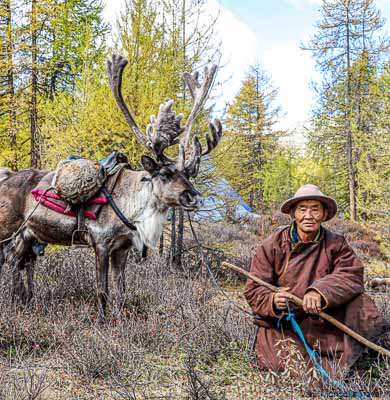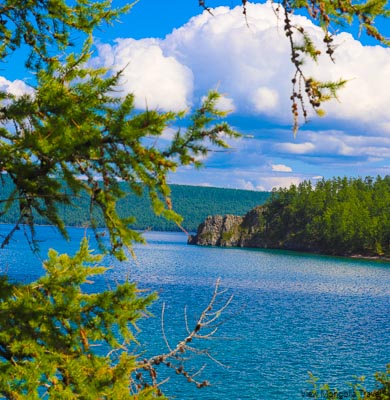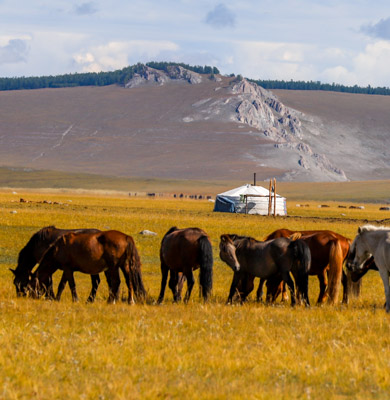Dukha Tribe & Dukha People
Mongolian Reindeer People or Tsaatan, a diminishing nomadic tribe who live in the depths of the Taiga in northern Mongolia are one of the last groups of nomadic reindeer herders in the world.
There about 400 Dukha people of 70-80 families live in communities, usually a group of two to seven households.
Mongolian reindeer people life is completely dependent on the Reindeer they herd, often moving their small encampment tepees 5-10 times a year in search of suitable weather and moss for the reindeer.
Ethnically, the Reindeer people are Tuvans, also known as the Uriankhai, Soyot, or Dukha, who speak a Uriankhai language distantly related to Mongolian. What is now Tuvan land was administratively part of Mongolia between 1760 and 1921, gained independence in 1921. Later in 1944, Tuva was formally integrated into Russia. When Russia involved in World War II, the reindeer herders or the Dukha tribe fled from Tuva and settled in northern Mongolia. The Dukha people in northern Mongolia gained Mongolian citizenship in 1956 after the number of deports back to Tuva. This small group of people are in high interest of the tourists, has been keeping their custom, tradition, and way of the nomadic living in the mountains to the north and west of Tsaagaan Nuur soum, Khovsgol province.
Life in Taiga is unique, nature is pristine which one of the most famous destinations in Mongolia. According to their relationship with mother nature, shamanism is the main belief. Therefore, the most famous shamans are among Tsaatans.
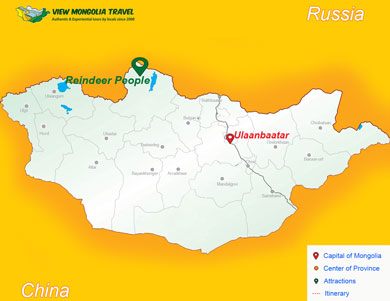
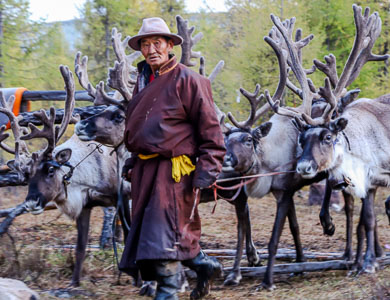
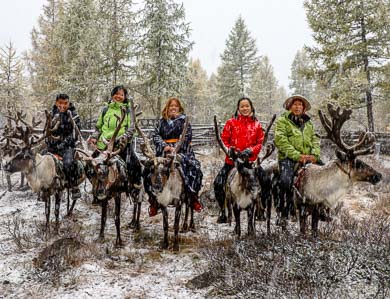
About Mongolian Reindeer and reindeer herders
At the end of the 20th-century Mongolian reindeer number decreased drastically from 2280 to 616.
Thanks to the number of organizations, individuals, foundations, as well as Mongolian government contributed the Dukha tribe to keep their traditional way of life and increase the reindeer head.
Mongolian reindeer herder Tsaatans proudly celebrated the 2000 Reindeer Festival in August 2019. Indeed, Mongolia reindeer number reached 2690 by 2020.
Tsaatans use the reindeer as the main way of transportation such as travel for hunting, the collection of firewood, as a pack animal for seasonal migrations, visiting relatives and friends, and traveling to the town for shopping and trade. Reindeer milk is part of Tsaatans' staple food from which they make cheese, milk tea, butter, and yogurt. A reindeer gives 96-100 liters of thick and rich milk during the milking season. Tsaatans occasionally eat reindeer meat, but overall they prefer to increase the reindeer number instead of slaughtering.
The Tsaatans or Dukha people begin training reindeer for riding when the reindeer are two years old ridden by children because the adults are too heavy to ride the two-year-old. However, ridden by adults at age of three when reindeer are strong enough. During the nomadic movement, the male reindeer usually carry loads weighing about 40 kg while females carry up to 30 kg.
When the weather is cooler, the reindeer are vigorous and healthy. Dukhas usually settle down at an altitude of 2300 m above the sea level, but 1800 m in winter where they can be sheltered and avoid the frigid winds. Snow is not an obstacle for reindeer to find and eat moss because they can dig in the snow with their hooves and find moss easily. The young males are castrated after mid-September when the weather cools down. The end of September to early October is a mating season for reindeer. The gestation period for a reindeer is about seven months.
The Reindeer people dwelling
The Dukha people live in different sizes of tepees comprise of two parts: wood sticks and a cover. Earlier times, the tepee frames were covered with animal skins, which later replaced by store-bought canvas. Large tepees are made up of 28-32 larch poles while middle-sized ones involve 22-25 poles and the small ones are of 17-22 poles. The Dukha people have little at their home, but everything needed for their life. At the rear of the tepee is one or two skin bags used to keep their valuables and shrines. Most Tsaatan prefer to sleep on an animal skin spread on the ground, but some prefer kind of low bed, hand made of wood. A stove sits in the middle of the yurt On the right side, the Dukha family keep its hunting equipment, saddles, tools, and utensils.
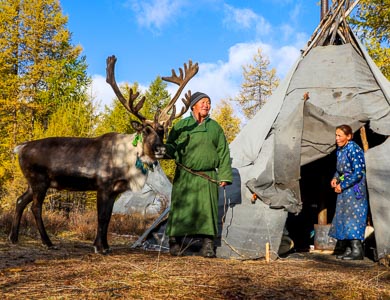
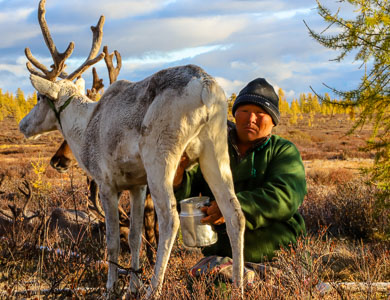
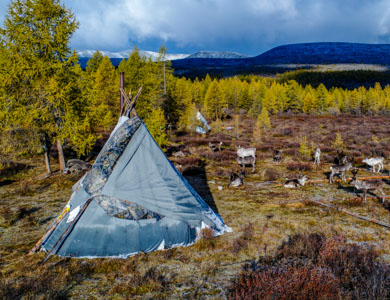
How do the Reindeer People/ Tsaatan of Dukha tribe make money or living?
Monthly, the Mongolian government has been granting some amount of money both for adults and children in the community.
Another source of income is tourism but it covers a few of the households depending on their encampment locations. Though, eco-friendly travel is vital.
They randomly sell the reindeer or its skin. Instead, hunt in the mountains in autumn for winter food. The Tsaatans have the closest relation with nature and know how to use the herbs and plants for medicinal purposes or food. Surplus medicinal plants, berries, and pinecone nuts are sold in the nearby towns or bartered in exchange for food and clothes. They, also catch fish spearing them with long poles.
Administratively, the Tsaatans belong to the nearby town where they see a doctor or their children can go to school staying in the school dorm or relatives.
How to travel to Taiga and visit Reindeer people?
Some travelers choose to travel all the way to and back northern Mongolia overland starting in Ulaanbaatar. This is the best option to discover the natural sceneries of central and northern Mongolia, explore the cultural items and nomadic way of life except for visiting the reindeer people in the Taiga. This journey takes about 14 days, including 4 days of horseback riding in the mountains.
The second alternative is to take one way or a return flight to Murun, a central town of Khovsgol province. The return domestic flight tour option requires 6-8 days. Though, you need 2-3 full days bumpy roads driving 2-4 days horseback riding.
Experienced horseback adventures ride longer distances starting the tour from Khovsgol Lake all the way to the Taiga tribe and ride back or drive back.
Border control permission is required when traveling to Taiga. The permission is available at the Border Patrol in Murun.
